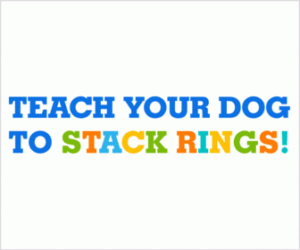Training a puppy is one of the most rewarding experiences for any pet owner. It’s a time filled with excitement, challenges, and immense joy as you build a lifelong bond with your new furry friend. Whether you’re a first-time dog owner or adding a new member to your pack, getting your puppy off to the right start is crucial for a well-behaved and happy adult dog. Here’s a comprehensive guide to help you navigate the world of puppy training with confidence.
1. Start with the Basics
Before diving into complex commands and tricks, focus on establishing a solid foundation. Basic commands such as “sit,” “stay,” “come,” and “down” are essential for good behavior. These commands not only make everyday interactions smoother but also help in managing your puppy’s behavior in various situations.
solid foundation. Basic commands such as “sit,” “stay,” “come,” and “down” are essential for good behavior. These commands not only make everyday interactions smoother but also help in managing your puppy’s behavior in various situations.
Tip: Use positive reinforcement methods, such as treats, praise, and playtime, to reward your puppy when they perform the desired action. This encourages them to repeat the behavior.
2. Create a Consistent Routine
Puppies thrive on consistency. Establish a daily routine that includes regular feeding times, potty breaks, playtime, and training sessions. Consistency helps your puppy understand what is expected and reduces confusion.
Tip: Set specific times for training sessions and stick to them. Short, frequent sessions (5-10 minutes each) are more effective than long, sporadic ones.
3. Socialize Your Puppy
 Socialization is a crucial part of puppy training. Expose your puppy to various people, pets, environments, and experiences to help them become well-adjusted and confident adults. The goal is to make new experiences positive and enjoyable.
Socialization is a crucial part of puppy training. Expose your puppy to various people, pets, environments, and experiences to help them become well-adjusted and confident adults. The goal is to make new experiences positive and enjoyable.
Tip: Introduce your puppy to different sights, sounds, and smells gradually. Positive reinforcement helps create a positive association with new experiences.
4. Establish House Rules
Decide on the rules for your household and stick to them. For example, if you don’t want your puppy on the furniture, make sure everyone in the household enforces this rule consistently. Inconsistency can confuse your puppy and hinder their training progress.
Tip: Use baby gates and crates to help manage your puppy’s access to different areas of your home. This aids in teaching them boundaries and helps with house training.
5. Potty Training
Potty training is one of the first things you’ll want to tackle. Start by setting up a designated potty area and taking your puppy there regularly, especially after meals, naps, and playtime. Praise and reward them immediately after they go potty in the right spot.
up a designated potty area and taking your puppy there regularly, especially after meals, naps, and playtime. Praise and reward them immediately after they go potty in the right spot.
Tip: Watch for signs that your puppy needs to go out, such as sniffing, circling, or whining. Be patient and consistent, as accidents are part of the learning process.
6. Address Problem Behaviors Early
Addressing problem behaviors, such as biting, jumping, or barking, early on is crucial for effective training. Redirect your puppy’s attention to a more appropriate behavior and reward them for making the right choice.
Tip: For biting, provide appropriate chew toys and discourage nipping by using a firm “no” and redirecting them to a toy. Avoid physical punishment, as it can lead to fear and anxiety.
7. Make Training Fun
Training should be an enjoyable experience for both you and your puppy. Use treats, toys, and praise to make learning fun and engaging. Keep sessions upbeat and varied to maintain your puppy’s interest and enthusiasm.
Tip: Incorporate training into daily activities, such as practicing commands during playtime or mealtime. This helps reinforce good behavior in different contexts.
8. Be Patient and Persistent
 Training a puppy requires patience and persistence. Progress may be slow at times, but consistency is key. Celebrate small victories and keep working towards your goals. Remember, every puppy learns at their own pace.
Training a puppy requires patience and persistence. Progress may be slow at times, but consistency is key. Celebrate small victories and keep working towards your goals. Remember, every puppy learns at their own pace.
Tip: Avoid frustration and stay calm during training sessions. If you’re feeling overwhelmed, take a break and return with a fresh perspective.
9. Seek Professional Help if Needed
If you encounter persistent behavioral issues or feel overwhelmed, don’t hesitate to seek help from a professional dog trainer or behaviorist. They can provide personalized guidance and support to address specific challenges.
Tip: Look for trainers who use positive reinforcement techniques and have experience with puppies. A professional can help you navigate more complex training issues and ensure a positive training experience for your puppy.
10. Enjoy the Journey
Training your puppy is not just about teaching commands; it’s about building a strong, trusting relationship with your new companion. Enjoy the process, celebrate your puppy’s successes, and cherish the moments you share.
Tip: Take lots of photos and videos of your puppy’s training milestones. These memories will be a wonderful reminder of your journey together.
Conclusion
Training your puppy is a foundational step in ensuring they grow into a well-behaved and happy adult dog. By starting with the basics, creating a consistent routine, socializing your puppy, and addressing problem behaviors early, you set the stage for a successful training experience. Remember to be patient, make training fun, and enjoy the special bond you’re building with your new furry friend. Happy training!
Robert
support@iqquest.info












